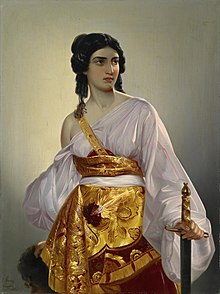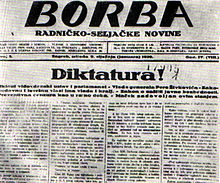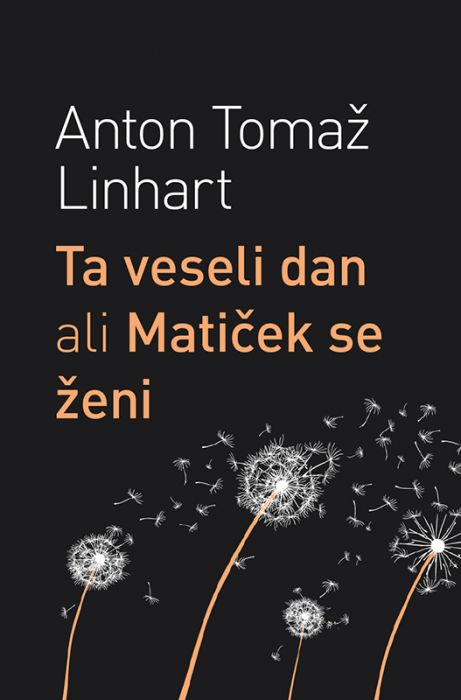Art in Slovenia not
only includes art from Slovenian artists, but it also includes the period when
it was part of Yugoslavia as well. Historically, because their artists were in
the center of Europe's greatest art centers, Slovenian artists generally
followed the art movements.
 |
| by Mihael Stroj |
The 18th- and 19th-century artists mainly worked as painters and sculptors.
Although they certainly had people painting before this era, it was around this
time that Slovenian artists began to really take off on an international level.
Artists of note include Matevž Langus
(Neoclassicm), Giuseppe Tominz (Biedermeier), Mihael Stroj (Romanticism), Ivan Grohar (Impressionism), and Veno Pilon (Expressionism).
 |
| Janez Puhar |
During the mid-1800s, photography was just becoming the hot new thing. Keep in
mind, cameras were still moderately dangerous and bulky things to have -- it
could take 10 minutes or so to take a photograph of people (which is why early
photographs always portray cranky looking people; could also be because there’s
no WiFi yet). Many people during this time were creating their own methods of
photography, experimenting around with which method worked best, and which was
the most practical. In 1841, one Slovene named Janez Puhar developed a method of photography on glass plates that
didn't use silver. However, it wasn't really developed commercially. Skip ahead
a century and a half later, and Arne
Hodalič became the first Slovene to publish his
photos in National Geographic. Very cool!
 |
| by Tone Kralj |
Sculptures, public art, and architecture also play an important part in Slovenian
art. Muralists and sculptors like Tone
Kralj and Alojz Gangl have
contributed their art to be seen on a larger scale. Before the 20th century,
architecture was largely done in the traditional styles of the time. However,
the latter part of the 20th century saw a change in architectural styles,
giving way to the more modern styles of Max
Fabiani, Edvard Ravnikar, and Marko Mušič
 |
| Milko Bambič |
One thing my daughter will be happy to know as an artist, is that there have
been a history of comics and illustration in Slovenia, mostly gaining
popularity in the 20th century. The first comic strip in Slovenia, Little Negro Bu-ci-bu, was first published
in 1927 by Milko Bambič,
depicting an allegorical life of Mussolini. Other comics during WWII were
highly popular. On the other end of the scale, illustrators for children's
books started becoming a niche market for many female artists. Folk heroes like
Martin Krpan and other folk tales were common themes.
Literature in Slovenia is mainly written in the Slovene language. The arts, and
especially its literature, were used as a catalyst for developing a sense of
nationalism. This played a more important role as they transitioned from the
break-up of Yugoslavia.
 |
| Adam Bohorič |
The earliest forms of literature were tales and myths told orally and passed
down from generation to generation. The earliest written examples of Old
Slovene were documents found in the early 1800s in Germany that dated back to
1000 AD (give or take 20-30 years). Much of these early writings were centered
around religious texts used to convert various Slavic tribes to Christianity.
After Adam Bohorič
and Sebastjan Krelj each published a
grammar book, these became the foundation for the development of the Slovene
language and literature. Primož Trubar, who helped bring Lutheranism to Slovenia, was also the first
author to have a printed book.
 |
| Borba newspaper, the official newspaper of Communist Yugoslavia |
As Slovene authors wrote their way from the 1600s through today, they embodied
many of the literary styles of Europe. The language changed as their borders
changed, and especially the period after Yugoslavia broke up, a sense of
nationalism and identity became important. A common theme of showing the real
Slovenia--its language, its poverty, their history--was their way of dealing
with the struggles of their past. But it was also a way of healing and making
plans for the future.
Some authors of note include Anton Tomaž Linhart (wrote the first history of Slovenia, wrote the first comedy
and play), France Prešeren (19th
century Romantic poet), Janez Trdina
(writer, historian), Janko Kersnik
(known for his literary realism), Simon
Gregorčič (considered first lyric poet in Slovene
language), Ivan Cankar (often
considered the best Slovene author), Dragotin
Kette (along with others considered founder of modern Slovene literature), Oton Župančič
(also considered one of the best writers in Slovene), Tone Seliškar (known for social realist poetry, Ela Peroci (children's author), Drago Jančar (one of
the more well-known contemporary authors), Rudi
Šeligo (considered one of the most prominent modernist writers), and
others.
Up next: music and dance
Up next: music and dance


No comments:
Post a Comment